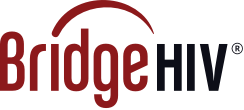
It’s about our vulnerability as a community
As a public health advocate, I’m always looking for better ways to reach out to vulnerable populations. After more than two decades of HIV education and intervention, why is it that young gay men of color still have a disproportionately high rate of infection? It’s obvious we’ve got a blind spot in our efforts. As a queer woman of color working in the field, I’ve got my own hunches, so recently I brought this up at a small gathering of long time friends. As we’re all approaching 30, we can look back at our not-too-distant past and see our sexual behavior with some perspective. Our dinner discussion mirrored a lot of the current research about how Black and Latino youth gain access to sexual health education and HIV risk-reduction strategies.
We all agreed that we got most of our sex education from friends and family. What our peer group shared is what we took to heart. What our friends experienced had more impact on our behavior than a message on the back of a bus stop featuring faces that didn’t look like us anyway. Also several people shared how inevitable contracting HIV felt, as if just by being black and gay, it was a given they’d get sick. It was a lot of stress to be under as young people.
Cross-generational politics also came up. If our parents weren’t comfortable talking about sex with us, especially gay sex, then we didn’t feel comfortable talking to any adults about our behavior. It felt like something only our peers would accept. Gender differences also came up in our conversation. While the women in my group discussed first visits to clinics and gynecologists and how those interactions went in regards to revealing our sexual history to strangers, the men revealed they didn’t have to come into contact with any sexual health professionals unless there was a problem. They didn’t have a routine check up to go to. They could completely avoid doctor’s offices. That was something I had not thought of.
In a Journal of Adolescence article, “It’s crazy being a Black, gay youth.” Getting information about HIV prevention: A pilot study, by D.R. Voisin, et al, the authors cited the lack of sexual health education in public schools designed to address the needs of gay youth as a formidable barrier in HIV prevention. They found that the “exclusion of same sex content in many sexual health curricula may reinforce a sense of alienation and “otherness,” fostering feelings of negative self-regard further adding to minority stress”(Voisin).
Obviously, it’s not just about condoms; it’s about our ability to negotiate with our partners about safe sex and risk reduction. It’s about our vulnerability as a community. With rates of new infection highest among African American male youth ages 13-29 who have sex with other men, it is important that we address the sexual health needs and concerns of gay males of color who are not receiving relevant information from their schools, churches, and intimate social networks.
I know it’s about more than making condoms readily available. There is a health disparity that must be addressed if we want to save lives. Another study, Comparisons of disparities and risks of HIV infection in black and other men who have sex with men in Canada, UK, and USA: a meta-analysis asked the question, how is it possible for young gay Black men to have a higher HIV infection rate if their condom use is just as high, if not higher than, other racial identities? The researchers found gay Black men are more than two times as likely to use condoms and were 50 percent more likely to have been tested for HIV within the previous 12 months. They are also more likely to have been tested for the virus more than once. The meta analysis found that the factors are not riskier behavior nor lack of condom use, but rather socioeconomic, rates of incarceration, and access to health care. The researchers found that, “elimination of disparities in HIV infection in black MSM cannot be accomplished without addressing structural barriers or differences in HIV clinical care access and outcomes.” It’s about working towards sustainable community prevention methods that ensure the prosperity of black communities.
So what did help us make better choices, or at least the best choices we could in the moment? We shared the positive impact of even having one friend who was knowledgeable about safe sex. And what it was like to have an adult who we identified with and trusted, who reached out to us even when we acted like we didn’t want their help. Having another person of color not shame us about our sexuality and show us how to have empathy towards each other and for ourselves made all the difference in the world to those of us at the table. We knew we needed to use condoms, but more than that we also needed care. We needed to learn to care for ourselves as young queer people of color in a society hell-bent on demonizing us for being just that.
By Jenese Jackson
February 2013



